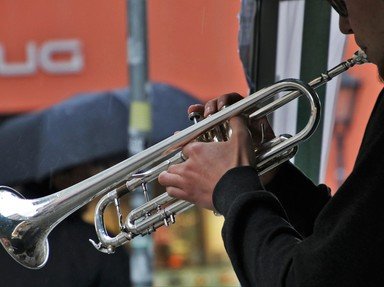Quiz Answer Key and Fun Facts
1. This band leader was instrumental in introducing jazz arrangements from the improvisational styles of Dixieland to a more commercial audience. Although jazz historians debate his prominence in the jazz movement, there is little doubt that he helped to make the feel of jazz accessible to mainstream audiences. He was one of the first to form what was to become the 'big band'. During his career he had 16 recordings that hit number one on the music charts. Who was this innovator?
2. Probably the most revered icon of the era was this man. He was equally distinguished as an arranger, composer, and an influence not only in the big band era but on all musical artists. He received a special Pulitzer Prize, had a postage stamp issued in his honor, and a limited edition coin. Who might take the A train to the Cotton Club to see his satin doll?
3. Stan Kenton was perhaps the most creative and experimental of all the Big Band leaders. Often controversial, Kenton brought innovation to the world of Big Bands. He incorporated Afro/Cuban beats and Latin rhythms into his music. What was the name of his theme song for his band?
4. They were brothers. Tommy played the trombone, Jimmy played the sax. They played together early in their careers and late but in between had successful individual Big Bands. What was their last name?
5. Perhaps no band leader had the pulse of the American people more than Glenn Miller. His music had a jazz/swing tradition but seemed to hit the mark for the times. His "In the Mood" is a classic of the Big Band era. Miller's career was cut short. Why?
6. Woody Herman called his bands "The Herd". His music was mostly fast-paced and concentrated on the individual musical talents of its members. In 1946 his band was so popular that it was voted the best band by Esquire Magazine, Downbeat Magazine, Billboard, and Metronome. What happened to The Herd in 1946?
7. Beginning as a piano player for silent movies, he became recognized as a master piano player in jazz and the Big Band era. He conducted bands for the better part of fifty years. His recordings of "One O'Clock Jump" and "April in Paris" are two of his classics. He was not of nobility and he was not a Duke or Earl. What was his name?
8. Artie Shaw was a skilled clarinetist and had a successful Big Band but his name was found in the gossip columns and tabloids of his time. To which of these four women was he NOT married in his eight trips to the altar?
9. Although all bands had their own character and style as well as variation in numbers of different instruments, what is generally considered to be the typical conformation of a Big Band, assuming seventeen as the typical size?
10. There were many reasons for the decline of the Big Band Era. Which of these happened first?
Source: Author
Rehaberpro
This quiz was reviewed by FunTrivia editor
ertrum before going online.
Any errors found in FunTrivia content are routinely corrected through our feedback system.

